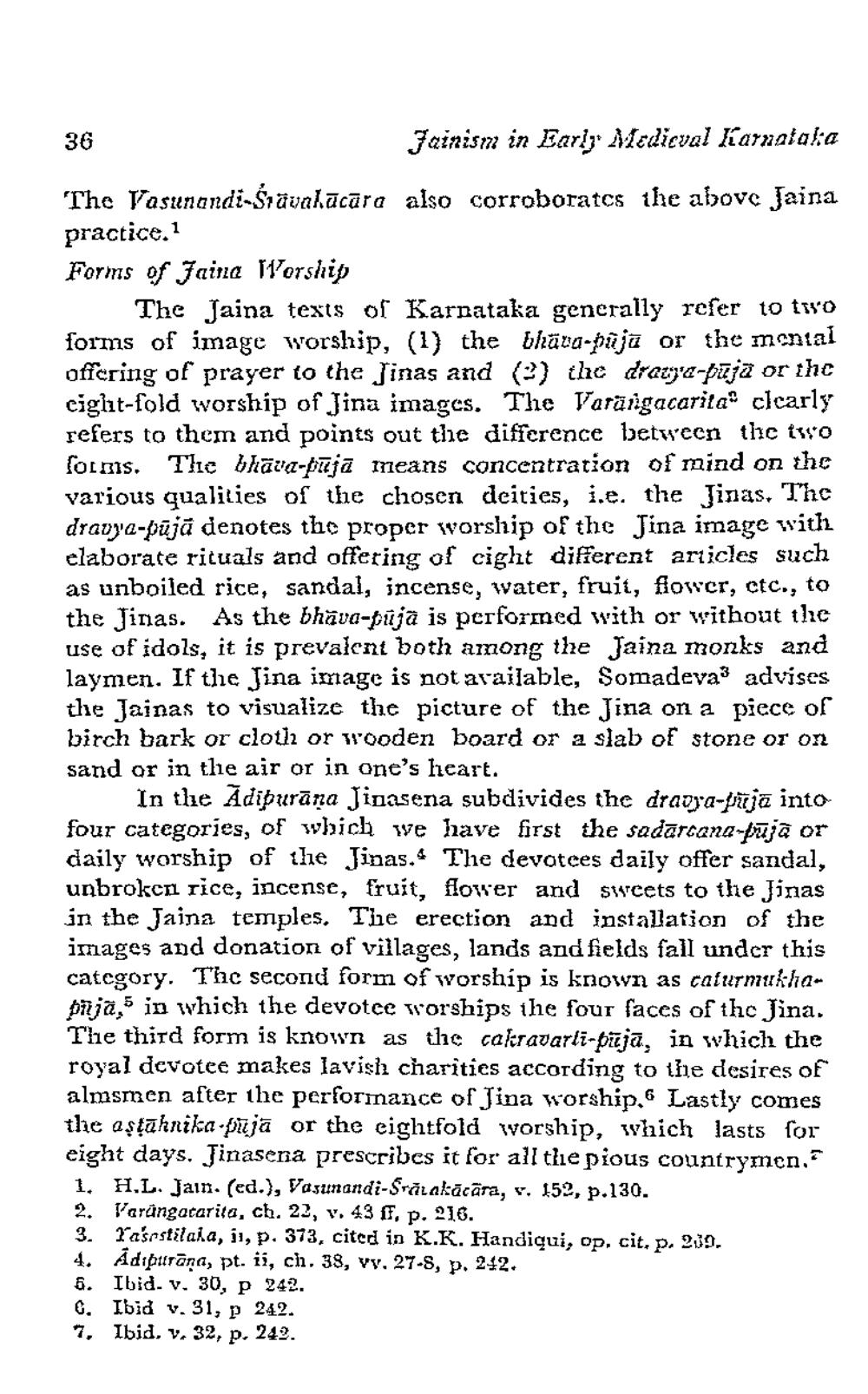________________
36
Jainism in Early Medieval Karnataka
The Vasunandi-Śrāvakācāra also corroborates the above Jaina
practice.1
Forms of Jaina Worship
The Jaina texts of Karnataka generally refer to two forms of image worship, (1) the bhava-puja or the mental offering of prayer to the Jinas and (2) the draya-puja or the eight-fold worship of Jina images. The Varangacarita clearly refers to them and points out the difference between the two forms. The bhāva-pājā means concentration of mind on the various qualities of the chosen deities, i.e. the Jinas. The dravya-pūjā denotes the proper worship of the Jina image with elaborate rituals and offering of cight different articles such as unboiled rice, sandal, incense, water, fruit, flower, etc., to the Jinas. As the bhava-puja is performed with or without the use of idols, it is prevalent both among the Jaina monks and laymen. If the Jina image is not available, Somadeva3 advises the Jainas to visualize the picture of the Jina on a piece of birch bark or cloth or wooden board or a slab of stone or on sand or in the air or in one's heart.
In the Adipurāna Jinasena subdivides the dravya-pūjā into four categories, of which we have first the sadarcana-pūjā or daily worship of the Jinas. The devotees daily offer sandal, unbroken rice, incense, fruit, flower and sweets to the Jinas in the Jaina temples. The erection and installation of the images and donation of villages, lands and fields fall under this category. The second form of worship is known as caturmukhapaja, in which the devotee worships the four faces of the Jina. The third form is known as the cakravarli-pājā, in which the royal devotee makes lavish charities according to the desires of almsmen after the performance of Jina worship. Lastly comes the astahnika puja or the eightfold worship, which lasts for eight days. Jinasena prescribes it for all the pious countrymen. 1. H.L. Jain. (ed.), Vasunandi-Srāzakācāra, v. 152, p.130.
5
2. Varângacarita, ch. 22, v. 43 ff, p. 216.
3. Tasestilaka, i1, p. 373, cited in K.K. Handiqui, op. cit. p. 200.
4. Adipurāṇa, pt. ii, ch. 38, vv. 27-8, p. 242.
6. Ibid. v. 30, p 242.
G. Ibid v. 31, p 242. 7. Ibid. v. 32, p. 242.




